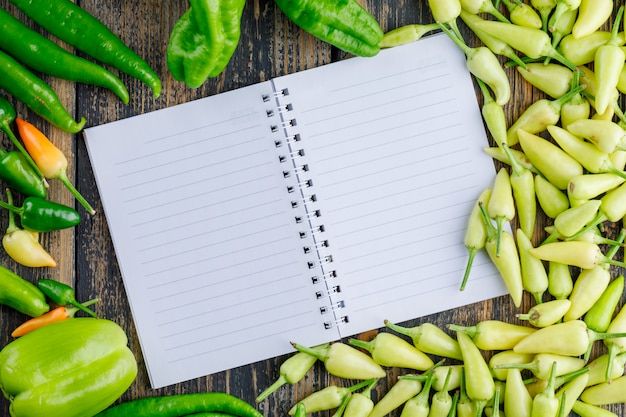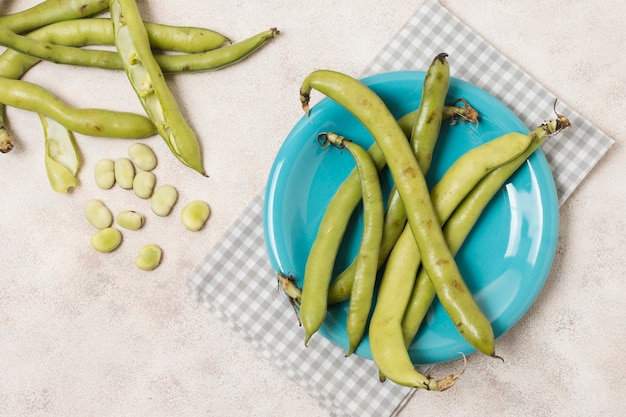Snap beans, those vibrant green pods that burst with flavour, are a staple in many kitchens. They're a versatile veggie that can be enjoyed in countless ways, whether it's a simple side dish or a starring role in a more complex recipe. But getting the cooking time just right is essential. You want them tender-crisp, with a slight bite, not mushy or raw. In this article, I'm sharing my secrets to achieving perfect snap beans, gleaned from years of experimenting and tasting in my own kitchen. Let's dive in!
Part 1: The Importance of Freshness

Choosing the Right Snap Beans
As with any produce, freshness is key to unlocking the best flavour and texture in snap beans. I always head to my local farmers' market or a reputable greengrocer, where I can choose the best beans. Here's what I look for:
- Vibrant Green: The colour should be a bright, lively green, a sign of freshness and good flavour.
- Firmness: Snap beans should feel firm and springy to the touch. Avoid beans that are limp or wilted, as this indicates they're past their prime.
- Free from Blemishes: Check for any signs of damage or blemishes. A few tiny spots are fine, but avoid beans with significant bruising.
- Consider the Size: The thickness of the bean can impact cooking time. Thinner beans will cook faster than thicker ones. If you have a mix of sizes, you may want to separate them for cooking.
Storing Snap Beans
Once you've got your beautiful snap beans, proper storage is crucial to maintain their freshness. Here's my go-to method:
- Refrigerator: Store them in a plastic bag in the refrigerator's crisper drawer. The humidity helps keep them crisp. They'll last for up to a week this way.
- Blanching and Freezing: If you have a large quantity, consider blanching them before freezing. This helps preserve their colour and texture.
Part 2: Getting Ready to Cook

Washing and Trimming
Before you start cooking, give your snap beans a thorough wash under cold running water. A colander is a handy tool for this. Once they're clean, it's time for trimming. Now, I know some folks like to leave those tiny stems on, but I find them a bit tough and can sometimes impart a slightly bitter flavour. So, I give them a good snap off, right at the end of the bean. You can leave the beans whole, or cut them into smaller pieces, depending on how you're planning to cook them.
Blanching: A Quick Prep
Blanching, which involves briefly cooking the beans in boiling water, is a great technique for snap beans, especially if you're planning to freeze them. It helps retain their bright green colour and keeps them nice and crisp. Here's how to blanch:
- Boiling Water: Fill a large pot with salted water and bring it to a rolling boil.
- Add the Beans: Gently add the snap beans to the boiling water.
- Cook Briefly: Cook for about 2 minutes.
- ice bath: Immediately transfer the beans to a bowl filled with ice water. This stops the cooking process and prevents them from becoming overcooked.
Blanching also makes the beans easier to peel if you prefer a smoother surface. Just be careful, as they will be hot!
Part 3: Cooking Time: A Breakdown

Now, let's talk about the cooking methods and the timing that will help you achieve those perfect snap beans.
Boiling: A Simple Method
Boiling is a quick and easy way to cook snap beans. Here's what you need to do:
- Boiling Water: Bring a large pot of salted water to a rolling boil.
- Add the Beans: Gently add the snap beans to the boiling water.
- Cook Time: Cook for 3 to 5 minutes, depending on the thickness of the beans.
- Test for Doneness: Use a fork to test for doneness. They should be tender-crisp, but still have a slight bite.
It's always better to err on the side of caution. If you're unsure, it's better to undercook slightly, as you can always cook them for a bit longer. Overcooked snap beans become mushy and lose their vibrant flavour.
Steaming: A Gentle Approach
Steaming is a healthier way to cook snap beans, as it preserves more of their vitamins and minerals. Here's how to steam snap beans:
- Boiling Water: Fill a steamer pot with water and bring it to a boil.
- Steamer Basket: Place the snap beans in a steamer basket over the boiling water.
- Cook Time: Steam for 5 to 7 minutes, until tender-crisp.
If you don't have a steamer pot, you can use a colander placed over a pot of boiling water. Make sure the water is boiling vigorously and that the steam is hitting the beans directly.
Sautéing: Adding Flavor
Sautéing is a fantastic way to add flavour to snap beans. The heat from the pan creates a lovely sear on the beans, which I find incredibly appealing. Here's how to sauté them:
- Heat Oil: Heat a tablespoon or two of olive oil in a large skillet over medium heat.
- Add the Beans: Add the snap beans and cook for about 5 minutes, stirring occasionally.
- Seasoning: Season with salt and pepper to taste. You can also add garlic, onions, or other seasonings during the last minute of cooking.
Roasting: Bringing Out the Sweetness
Roasting is a wonderful technique for highlighting the natural sweetness of snap beans. Here's how to roast them to perfection:
- Preheat Oven: Preheat your oven to 400°F (200°C).
- Toss Beans: In a bowl, toss the snap beans with olive oil, salt, and pepper. You can also add herbs like rosemary or thyme.
- Roast: Spread the beans in a single layer on a baking sheet. Roast for 15 to 20 minutes, or until they are tender-crisp.
Roasting brings out the natural sweetness of the beans and creates a wonderful caramelized flavour.
Part 4: The Perfect Snap Bean
What Makes a Perfect Snap Bean?
A perfect snap bean is a delicate balance of textures and flavours. Here's what to look for:
- Tender-Crisp: It should be tender enough to easily bite into, but with a slight resistance, not mushy or soft.
- Vibrant Green Color: The colour should be a beautiful, bright green, a sign of freshness and flavour.
- Slight Sweetness: There should be a touch of sweetness, which comes out beautifully when roasted.
Signs of Overcooked Snap Beans
Overcooked snap beans are a culinary tragedy. Here are the telltale signs:
- Mushy Texture: They lose their crispness and become mushy.
- Dull Colour: Their vibrant green colour fades, becoming more muted.
- bitter taste: They can develop a slightly bitter taste.
Part 5: Tips for Success
Here are a few tips to help ensure your snap beans turn out perfectly every time:
Don't Overcrowd the Pan
When cooking snap beans, especially when sautéing or roasting, it's important not to overcrowd the pan. Overcrowding can lead to uneven cooking and steaming instead of browning or roasting. If you have a large quantity of beans, cook them in batches to ensure even cooking.
Season Wisely
Seasoning is essential for elevating the flavour of snap beans. Salt is a must, as it enhances their natural sweetness and helps them cook more evenly. You can also add black pepper, garlic, onions, herbs, or spices. A squeeze of lemon juice adds a bright, refreshing touch. Experiment with different seasonings to find your favourites.
Timing is Key
As I mentioned earlier, timing is crucial for achieving perfectly cooked snap beans. A fork is your best tool for testing doneness. They should be easily pierced, but still offer a slight resistance. If you're unsure, it's always better to undercook slightly, as you can always cook them for a bit longer if needed.
Part 6: The Flavor Factor
Adding Flavor to Snap Beans
Snap beans are a blank canvas for flavour. Here are a few ideas to inspire your culinary creativity:
- Herbs and Spices: Roasted snap beans with rosemary, thyme, garlic powder, or a sprinkle of red pepper flakes are delicious.
- Garlic and Onion: Sautéing them with garlic and onions adds a wonderful depth of flavour.
- Lemon: A squeeze of lemon juice or a sprinkle of lemon zest brightens the flavour and adds a refreshing touch.
- Chilli Flakes: For a touch of heat, add a pinch of chilli flakes during cooking.
Pairing Snap Beans with Other Ingredients
Snap beans pair beautifully with a variety of ingredients, making them a versatile addition to many dishes. Here are a few ideas:
- Potatoes and Carrots: They make a delightful combination in a roasted vegetable medley.
- Tomatoes, Onions, and Garlic: These ingredients create a delicious combination in a sauté or a pasta sauce.
- Herbs and Spices: Experiment with different herbs and spices to enhance the flavour of your snap bean dishes.
- Cheeses: A sprinkle of Parmesan cheese adds a salty, umami flavour to roasted snap beans.
- Salads: Add them to salads for a crunchy, flavourful element.
- Stir-fries: Snap beans are a wonderful addition to stir-fries, adding colour, texture, and flavour.
- pasta dishes: They make a delicious addition to pasta dishes, adding a touch of freshness and vibrancy.
Part 7: Snap bean recipes
Now, let's put those tips into action with a few delicious recipes.
1. Roasted Snap Beans with Garlic and Rosemary
This is a simple but incredibly flavorful recipe that showcases the natural sweetness of snap beans. Here's what you'll need:
- 1 pound snap beans, trimmed
- 2 tablespoons olive oil
- 1 clove garlic, minced
- 1 teaspoon dried rosemary
- Salt and pepper to taste
Instructions:
- Preheat oven to 400°F (200°C).
- In a large bowl, toss the snap beans with olive oil, garlic, rosemary, salt, and pepper.
- Spread the beans in a single layer on a baking sheet.
- Roast for 15-20 minutes, or until tender-crisp.
2. Sautéed Snap Beans with Garlic and Lemon
This recipe is quick, easy, and bursting with flavour. Here's what you'll need:
- 1 pound snap beans, trimmed
- 2 tablespoons olive oil
- 2 cloves garlic, minced
- 1/4 cup lemon juice
- Salt and pepper to taste
Instructions:
- Heat the olive oil in a large skillet over medium heat.
- Add the snap beans and cook for 5 minutes, stirring occasionally.
- Add the garlic and cook for 1 minute more.
- Stir in the lemon juice, salt, and pepper.
- Cook for 1 minute more, or until the beans are tender-crisp.
3. Simple Steamed Snap Beans
This is the simplest way to enjoy the natural flavour of snap beans. Here's what you'll need:
- 1 pound snap beans, trimmed
- Salt to taste
Instructions:
- Fill a steamer pot with water and bring it to a boil.
- Place the snap beans in the steamer basket and steam for 5-7 minutes, or until tender-crisp.
- Season with salt to taste.
Part 8: FAQs
1. What are the best ways to store snap beans?
The best way to store snap beans is in a plastic bag in the refrigerator's crisper drawer. They'll stay fresh for up to a week. You can also blanch them and freeze them for later use.
2. What are the signs of overcooked snap beans?
Overcooked snap beans will be mushy and lose their bright green colour. They might also have a slightly bitter taste.
3. How do I know when snap beans are cooked?
Snap beans are cooked when they are tender-crisp, not mushy or raw. They should be easily pierced with a fork, but still have a slight bite.
4. Can I use frozen snap beans instead of fresh ones?
Yes, you can use frozen snap beans instead of fresh ones. However, you may need to adjust the cooking time slightly. Frozen snap beans usually take a bit longer to cook.
5. What are some tips for adding flavour to snap beans?
There are countless ways to add flavour to snap beans. You can roast them with herbs and spices, sauté them with garlic and onion, or even add them to soups and stews. Experiment with different seasonings to find your favourites.
I hope this comprehensive guide has inspired you to embrace the versatility of snap beans. Now, go forth and create some delicious and perfectly cooked snap bean dishes!
Everyone is watching

Corn on the Cob: The Ultimate Guide to Perfectly Cooked Ears
Healthy MealsAh, corn on the cob. Just the name evokes images of sunny days, barbecues, and that sweet, juicy flavour that ...

Perfect Pork Roast Oven Cooking Time: A Guide to Delicious Results
Healthy MealsThere's something truly satisfying about a perfectly roasted pork. The aroma alone is enough to make your mout...

Scallops: The Ultimate Guide to Perfect Cooking
Healthy MealsAh, scallops. Those delicate, sweet, and utterly delicious morsels of the sea. They hold a special place in my...

Ham Cooking Time: How Long to Bake, Smoke, or Boil a Delicious Ham
Healthy MealsAh, ham. It's a classic, isn't it? A real crowd-pleaser, especially around holidays. And when done right, it'...

Spaghetti Squash: The Ultimate Guide to Cooking and Serving
Healthy MealsRemember that time you saw spaghetti squash at the supermarket, looking all bumpy and strange, and thought, "W...
